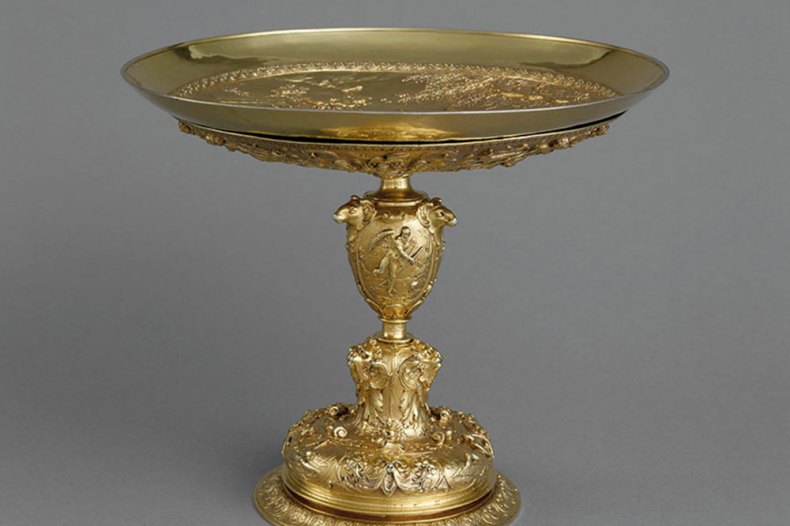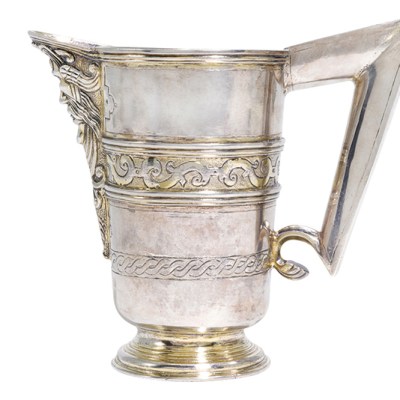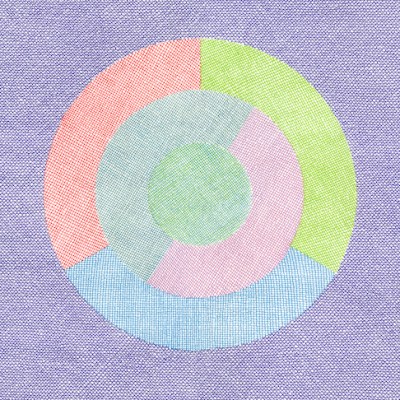From the May 2023 issue of Apollo. Preview and subscribe here.
At last, the Louvre has published the catalogue raisonné of its fabulous collection of silver and gold works of art from modern Europe. Why is this so important? While catalogues raisonnés are common enough in the world of paintings, they are rarer in the world of objects. Unlike paintings, silver and gold objects are not signed, and they need an expert eye to make confident attributions. They are hallmarked, but not systematically; some marks have worn away, and these marks were for control purposes rather than to establish authorship. Hallmarks need to be read, identified, associated with archival records, and then with objects that are in public and private collections or circulating on the art market: this is not a straightforward process – and has certainly put off many academics. It has taken Michèle Bimbenet-Privat – with contributions from Florian Doux and Catherine Gougeon – nearly ten years to publish her three-volume catalogue.
Bimbenet-Privat is renowned for her sophisticated writing on French silver. She rapidly built a reputation for her thorough approach – connecting archival records with objects – and her keen eye, looking at the making, mounting and soldering of objects. For Bimbenet-Privat, there is no shame in paying attention to a retouched, embellished or even deliberately faked object or revising a long-accepted provenance. That is how she found that a gold casket that was supposedly a gift from Cardinal Mazarin to Anne of Austria, wife of Louis XIII, had in fact been made for and used by Louis XIV for his parures – the gems mounted on his clothes as buttons, shoe-buckles and so forth; she even dug up a reference to it in a 1687 report by the Swedish architect Nicodemus Tessin during his visit to Versailles. Reflecting Bimbenet-Privat’s eagerness to present the truth and ‘sharpen the reader’s eye’, the publication has a final section dedicated to objects regarded as ‘fake, later decorated, transformed or very doubtful’. She is opening a path towards acceptance of and interest in these objects – often neglected by collectors, who avoid acquiring them or become upset at perhaps having been duped, as well as by curators, who leave them in storage, unsure how to present the difficulties to visitors.
It is courageous of Bimbenet-Privat to address such ‘weaknesses’ in a world-class collection. But these are even more relevant given the history of this collection, built only in the 19th and 20th centuries. From the early modern period onwards, silver and gold objects were at the heart of any princely collection, often more highly regarded and more costly than paintings. However, their obvious monetary worth made them the victims of regular melting campaigns. These took place in France as early as 1689–90, under Louis XIV, and by 1786 it was calculated that items to the astonishing value of 5,717,260 livres had already been melted down. When the royal collection fell into the hands of the Revolutionary government, not much of the magnificent French silver remained – more was in other countries, due to lavish diplomatic gifts and grandiose commissions from foreign customers. The little silver left was regarded as functional – used for religious purposes, toilette, dining and other furnishing – and so was not listed among the public collection allocated to the newly created Museum Central des Arts in 1791. A very few pieces were considered worth keeping but not worth exhibiting to the public; the rest was either melted, sold or reused. As political systems changed in early 19th-century France, some silver and gold works of art went to and fro between Napoleonic and later Bourbon palaces, and then a succession of short-lived royal museums. They eventually joined the Louvre’s collection in the second half of the 19th century. This was very different from the English system, which by that time included major national institutions – the Victoria and Albert Museum, the British Museum, the National Gallery – each with a clear identity and acquisition policy.
Tazza (c.) attributed to Paulus van Vianen. Musée du Louvre, Paris. © RMN-Grand-Palais/Dist. PHoto Scala, Florence

Silver entered the Louvre’s collection only sporadically. The development of the Renaissance collection began with the acquisition in 1832 of a magnificent cup then attributed to Cellini, now identified as by Paulus van Vianen. The next key date is 1907, when the Louvre acquired a piece by Thomas Germain, the most celebrated 18th-century French silversmith. Cultivating expertise, and relationships with collectors, the Louvre received magnificent bequests, notably the David-Weill and the Puiforcat collections, and managed to acquire masterpieces from other eminent Parisian silversmiths such as Claude Ballin, focusing on pieces from collections of queens and consorts, royal mistresses, princes and cousins, or foreign commissions.
The collection is presented here through 470 catalogue entries, with first-class appendices, makers’ biographies and even a heraldic index. The first two volumes are dedicated to vessels (pièces de forme), ordered chronologically, the third to table silver: forks, knives and spoons of every kind imaginable. Each entry gives the silver- and goldsmithing techniques used, the object’s dimensions, a detailed record of marks (town marks, date mark, control marks) with illustrations, a description of heraldic symbols , a complete provenance with archival records, bibliography and exhibition history. Each object is fully described in direct – though technical – language. This is followed by a note explaining context and function, and how the object was first catalogued at the Louvre.
Far more than a lavishly illustrated catalogue, this book offers marvellous insights into material culture in modern Europe. It’s just a shame that it is not available in English.
Orfèvrerie de la Renaissance et des Temps Modernes, XVIe, XVIIe et XVIIIe siècles: La collection du musée du Louvre by Michèle Bimbenet-Privat, Florian Doux and Catherine Gougeon is published by Faton.
From the May 2023 issue of Apollo. Preview and subscribe here.



